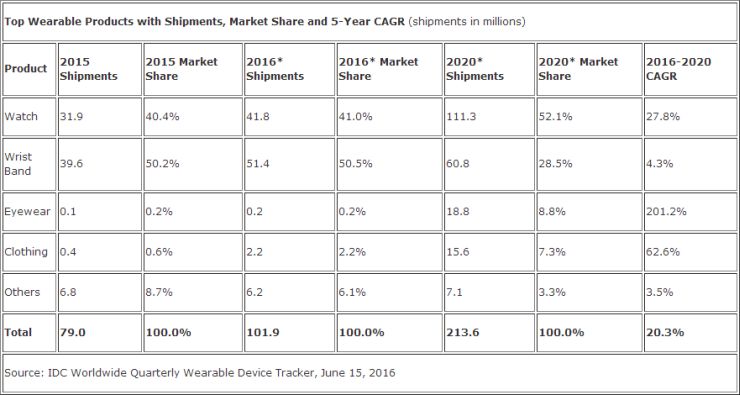OOPS! You forgot to upload swfobject.js ! You must upload this file for your form to work.
Smart Points in the coming years confined to a market share of no more than 10 percents
![]()
|
xtreview is your : Video card - cpu - memory - Hard drive - power supply unit source |
|
|||
|
|
||||
 Recommended : Free unlimited image hosting with image editor
Recommended : Free unlimited image hosting with image editor
|
xtreview is your : Video card - cpu - memory - Hard drive - power supply unit source |
|
|
|
|
||
|
Xtreview Support  N-Post:xxxx Xtreview Support        |
SMART POINTS IN THE COMING YEARS CONFINED TO A MARKET SHARE OF NO MORE THAN 10 PERCENTS |
| Please Feel Free to write any Comment; Thanks  |
One more copy of Core i9-7960X has overcome a boundary of 5000 points in Cinebench R15 (2017-09-04)
Core i3-7350K improved XTU record to 1227 points (2017-05-25)
A single copy of NVIDIA Titan Xp scored 12 718 points in 3DMark Time Spy (2017-04-14)
Microsoft Points for virtual reality will be distributed in March (2017-01-20)
3DMark Time Spy now earn points HWBoints (2017-01-15)
Quartet NVIDIA Titan X scored 41 297 points 3DMark Fire Strike Extreme (2016-12-06)
GeForce GTX 1070 made 20 000 points in 3DMark Fire Strike (2016-10-09)
NVIDIA Titan X overcame the level of 600 thousand points Aquamark (2016-09-27)
NVIDIA Titan X Pair with water blocks scored 90,445 points in 3DMark2001 SE (2016-09-27)
Overclocked NVIDIA Titan X100 thousand points 3DMark Vantage Performance (2016-09-19)
iPhone 7 in AnTuTu 178,397 points (2016-09-14)
Maintainability Samsung Galaxy Note 7 of Android-smartphone estimated at 4 points out of 10 (2016-08-19)
Smart Points in the coming years confined to a market share of no more than 10 percents (2016-06-17)
Huawei P9 on Kirin 955 gaining nearly 100,000 points in AnTuTu (2016-03-31)
single GeForce GTX 980 Ti was able to overcome the barrier of 300 thousand points in 3DMark03 (2016-03-25)
Xiaomi Mi5 scored almost 180 thousand points in AnTuTu (2016-03-20)
Maintainability of Samsung Galaxy S7 estimated at 3 points out of 10 possible (2016-03-09)
Kngpn 45,000 points in 3DMark Fire Strike (2016-03-05)
Google has sold 5 million points Cardboard Virtual Reality (2016-03-03)
Another court between Apple and Samsung has brought two points in favor of Samsung (2016-02-27)
![]()
To figure out your best laptops .Welcome to XTreview.com. Here u can find a complete computer hardware guide and laptop rating .More than 500 reviews of modern PC to understand the basic architecture


7600gt review
7600gt is the middle card range.
We already benchmarked this video card and found that ...

 geforce 8800gtx and 8800gts
geforce 8800gtx and 8800gts  Xtreview software download Section
Xtreview software download Section  AMD TURION 64 X2 REVIEW
AMD TURION 64 X2 REVIEW  INTEL PENTIUM D 920 , INTEL PENTIUM D 930
INTEL PENTIUM D 920 , INTEL PENTIUM D 930  6800XT REVIEW
6800XT REVIEW  computer hardware REVIEW
computer hardware REVIEW  INTEL CONROE CORE DUO 2 REVIEW VS AMD AM2
INTEL CONROE CORE DUO 2 REVIEW VS AMD AM2  INTEL PENTIUM D 805 INTEL D805
INTEL PENTIUM D 805 INTEL D805  Free desktop wallpaper
Free desktop wallpaper  online fighting game
online fighting game  Xtreview price comparison center
Xtreview price comparison center Lastest 15 Reviews


Rss Feeds
Last News
- The new version of GPU-Z finally kills the belief in the miracle of Vega transformation
- The motherboard manufacturer confirms the characteristics of the processors Coffee Lake
- We are looking for copper coolers on NVIDIA Volta computing accelerators
- Unofficially about Intels plans to release 300-series chipset
- The Japanese representation of AMD offered monetary compensation to the first buyers of Ryzen Threadripper
- This year will not be released more than 45 million motherboards
- TSMC denies the presentation of charges from the antimonopoly authorities
- Radeon RX Vega 64 at frequencies 1802-1000 MHz updated the record GPUPI 1B
- AMD itself would like to believe that mobile processors Ryzen have already been released
- AMD Vega 20 will find application in accelerating computations
- Pre-orders for new iPhone start next week
- Radeon RX Vega 57, 58 and 59: the wonders of transformation
- ASML starts commercial delivery of EUV-scanners
- The older Skylake processors with a free multiplier are removed from production
- Meizu will release Android-smartphone based on Helio P40
- AMD Bristol Ridge processors are also available in American retail
- The fate of Toshiba Memory can be solved to the next environment
- duo GeForce GTX 1080 Ti in GPUPI 1B at frequencies of 2480-10320 MHz
- New Kentsfield overclocking record up to 5204 MHz
- Lenovo released Android-smartphone K8

HALO 3 HALO 3 - Final Fight!

PREY Prey is something you don t often see anymore: a totally unigue shooter experience.

computer news computer parts review Old Forum Downloads New Forum Login Join Articles terms Hardware blog Sitemap Get Freebies



